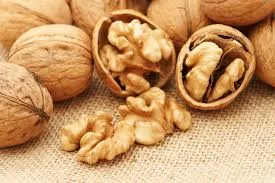The kidneys are responsible for so many important
functions, including filtering
toxins from your blood.
Here’s a remarkable fact: Every 30 minutes, all the blood in your
body travels through the kidneys. Every single day – thanks to your
kidneys – more than two quarts of waste are cleared from your
bloodstream and removed from the body as urine. Without this vital
kidney function, waste would accumulate and serious damage to the organs
throughout your body would occur.
Kidneys also:
- Oversee distribution of important minerals.
- Regulate the body’s acid-alkaline balance to keep you from becoming too acidic.
- Manage the body’s fluid levels.
- Release three essential hormones involved in blood pressure, bone building, and maintaining healthy red blood cells, among their other duties.
We live in a world filled with chemicals, toxins, and corrosive
materials, things that overload our kidneys and force them to work
harder than they should. In addition, dehydration remains a problem for
the majority of people. If you’re not taking advantage of
detoxification suggestions and drinking plenty of fresh, filtered
water every day, you could be putting your own kidneys at risk.
Here are the symptoms of possible kidney problems:
- Back pain, especially when it’s sudden and intense
- An urgent need to urinate
- Fatigue
- Swollen legs, hands, feet, or ankles
- Blood in the urine or difficulty urinating
- Bloating
- Puffy eyes
- Ridges in fingernails
- Skin problems
- Nausea and/or vomiting
- Metallic taste in the mouth
Infections and
kidney stones are two of the most common kidney problems. Generally, infections are due to the bacteria
E. coli gaining access to the urinary tract where they can connect with the kidneys.
Technically, kidney infection is a form of
urinary tract infection (UTI) and is treated with
antibiotics.
Kidney stones, on the other hand, are solid, chemical deposits that form inside the kidney.
Dehydration
is one of the most common causes of kidney stones. A kidney stone can
be nearly invisible to the naked eye, as large as a marble, or even
bigger.
Tiny kidney stones pass out of the body in the urine, so you’re never
aware of those. Larger kidney stones, however, can become lodged in the
ureter, a thin tube connecting the kidneys and the bladder. When they
become stuck, these stones can cause severe pain in the side or back,
blood in the urine, and difficulty urinating. It can take days or even
weeks for a kidney stone to pass on its own, so if you’re experiencing
kidney stone symptoms, see a health care professional as soon as
possible.
In addition, there are three types of serious kidney disease – acute
renal failure, chronic kidney disease, and end stage renal disease.
(Note: The word “renal” is simply a medical term for kidneys.)
Acute renal failure (ARF) could be due to an injury or
ingesting toxic substances. ARF generally responds well to treatment,
especially if the kidneys are not severely damaged.
When kidneys gradually lose the ability to function, it is typically due to
chronic kidney disease or CKD,
the most common type of kidney ailment. Often, there are no symptoms of
CKD until the condition has advanced. Then patients could experience
numbness and/or swelling in the hands and feet, frequent urination,
nausea, anemia, and poor appetite.
Finally,
end stage renal disease (ESRD) is a serious condition
in which there is no or very little kidney function remaining, and the
damage to the kidney is permanent. At this point, a patient is looking
at daily dialysis sessions or a kidney transplant.
Kidney cancer, while not common, does seem to be increasing. In the
early stages, there are few symptoms. As the cancer advances, symptoms
may include blood in the urine, fever that comes and goes, fatigue, back
pain, and weight loss. Kidney cancer can be treated with surgery,
radiation, and assorted drugs, depending on its location, size, type,
and the overall health of the patient.
Ten Steps To Keeping Kidneys Healthy
Now that we’ve looked at the bad news, you’ll be happy to hear that
there’s a good side here, too, and it is this: For the most part, the
conditions that lead to kidney compromise are avoidable.
Start by asking your health-care professional for blood panel readings of three key measures of kidney health – the
BUN (blood urea nitrogen) and
creatinine levels and your
EGFR (Estimated Glomerular Filtration Rate) numbers.
The BUN test results measure kidney and liver functions. The healthy
range is considered 10 to 20 mg/dL; anything higher may indicate kidney
problems.
Similarly, the BUN/creatinine ratio tells your doctor if your kidneys
are eliminating waste efficiently. If creatinine levels are elevated,
there could be a problem with the kidneys. A healthy BUN/creatinine
ratio is between 10:1 and 20:1, although men and older people can be
higher and still be healthy.
The EGFR test looks for signs of kidney damage. This is an especially
useful test for patients with diabetes and/or high blood pressure, both
of which can cause kidney problems. Reading the test scores correctly
is very important, though. It’s perfectly normal, for example, for a
16-year-old to have an eGFR of 300 ml/min, while a 60-year-old may score
100 ml/min – yet in both cases the kidneys are fine. A score lower than
60 ml/min, however, indicates that kidney function is impaired.
Scores from these tests tell you how strong your kidneys are now, and
there are other kidney function tests available. Unfortunately, as many
as half of all people with kidney problems don’t know they are at risk.
Knowing your numbers can help you stay on top of the situation so you
can alter any behavior that may be harmful.
Here are additional steps that can help keep kidneys healthy:
1) Hydrate
Staying thoroughly hydrated is the most important thing you can do to
prevent kidney stones and keep kidneys strong. Water dilutes the urine,
and that prevents minerals and salts from clustering together and
forming stones. I often recommend that patients who are at risk for
kidney stones start the day by drinking fresh lemon juice in a glass of
room temperature water.
2) Probiotics
Make certain you have healthy populations of friendly bacteria known as
probiotics
in your intestines. Studies have shown that these microorganisms are
linked to better overall and digestive health, as well as a long list of
other benefits. One of those involves assisting kidneys in processing
waste materials, as well as reducing the likelihood of developing kidney
stones.
A recent clinical trial involving patients with chronic kidney
disease found that the group taking probiotics improved kidney function
test scores as well as overall quality of life.
3) Eat Less Meat
Go easy on animal protein. Kidney stones are most common in
populations that consume a great deal of meat. I suggest aiming for less
than 65 grams of animal protein per day, which is just a little more
than two ounces.
4) Avoid Phosphorous
Watch your phosphorous intake. You rarely hear about the mineral
phosphorous, probably because deficiencies are so rare, especially for
anyone eating the
Standard American Diet (SAD). And that’s why phosphorous is becoming a problem, particularly for kidneys.
The mineral is found in most foods, but carbonated soft drinks and
prepared, processed foods are especially high in phosphorus. You only
need 800 mg to 1,200 mg of phosphorus each day; higher amounts are
flushed from the body by healthy kidneys.
When kidneys don’t work well, phosphorus accumulates in the body,
causing potentially serious conditions, such as bone and heart
disorders, as well as
calcification (hardening) of tissues. The easiest way to make sure you’re not getting too much phosphorus is to eat a nutritious,
whole foods diet and totally avoid any fast and convenience foods.
5) Quit Smoking
Smoking hurts the kidneys, so if that is one of your vices you have to stop.
6) Drink Juice
One of the best ways to support good kidney health is with daily
juicing. My favorite is to juice one entire bunch of
cilantro or
parsley,
two herbs that are kidney friendly and help remove heavy metals from
the body, mixed with water, lemon juice, and raw, organic honey to
taste. If you have not discovered juicing yet, you can also
use a greens product that provides a healthy serving of these essential nutrients.
7) Eat These Foods
Stock-up on kidney-supportive foods, including
watermelon,
berries (cranberries, blueberries, and strawberries),
peppers,
apples,
garlic,
onions,
cabbage,
cauliflower, and
olive oil. While you’re at it, please review my earlier recommendations for healthy eating and
reducing inflammation, because those suggestions benefit kidneys, too.
8) Lose Some Weight
If you’re carrying around extra pounds, do your kidneys a favor and
shed a few pounds. Obesity has been linked to an increased likelihood of developing kidney cancer.
9) Ditch the Pain Relievers
Slash your risk of kidney cancer even further by minimizing your use of pain relievers, including
non-steroidal anti-inflammatory drugs (NSAIDs), such as
aspirin,
ibuprofen (Advil, Motrin, Nuprin), naproxen (Aleve), and
acetaminophen
(Tylenol). Products like these are very hard on the kidneys. Even
worse, researchers have found that these drugs increase the risk of
developing kidney cancer.
10) Epsom Salt
Treat yourself to a detox bath in Epsom salts. Removing waste and
toxins gives kidney a boost while improving your overall health.
Making the changes I’ve listed above will benefit your kidneys, along
with your overall health. But, in addition, there are three significant
threats that really require action on your part. If you’re suffering
from
high blood pressure,
pre-diabetes,
or diabetes, your kidneys could be suffering, too. These conditions can
be improved with natural remedies and lifestyle changes, but those will
require some commitment on your part. I hope you’ll agree that taking
care of your kidneys is a worthwhile goal and make the necessary changes
to protect these vital organs.
Dr. Leigh Erin Connealy, who authored this piece, combines her real-world hands-on patient
experience and modern-day nutritional insights for dealing with common
ailments such as blood pressure, blood sugar, heart health, joint pain,
and many of today’s top health challenges.





































